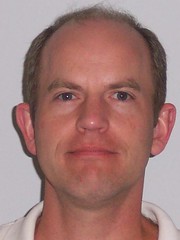bluespot offers free WiFi Internet access in Freiburg im Breisgau, Germany (also in Berlin and Dortmund)

If you travel to Germany, getting broadband Internet access with a local access provider is a challenge or expensive or both. Free WiFi hotspots are rare or non-existent. Local access providers require a local telephone number and a service contract for home or mobile service in order to get flat or low cost Internet access. T-Mobile hotspots rates begin at 2 Euros per 15 minutes of uninterrupted, use or lose access for credit card walk-up (surf-in) customers.
When I first saw these bluespot kiosks, I was sceptical. What is the business angle? How do they make money on this? Will this result in some form of SMS spam? I will explore these questions later.
First, I had to register once with my mobile phone number, and a 4-digit PIN code was sent via SMS to my mobile. I registered at the kiosk, but it is also possible to register with your computer's browser.
Then, for each one hour WiFi Internet session, I had to enter my mobile phone number and the PIN code in order to obtain an access code via SMS. As the final step, the access code is entered into the start page and Internet access is confirmed. Of course, this last step must be done in the browser on the computer you wish to access the Internet!
After the one hour session expires, a new access code must be requested and entered into your browser in order to continue accessing the Internet.
bluespot is provided courtesy of Wall AG, a Germany company delivering city furniture and advertising kiosks to customers worldwide. Wall provides cities with free furniture and generates revenue by selling advertising space to companies. I believe the bluespot program leverages the Internet access requirments of the Wall information kiosks. In addition, I believe they may have plans for location based services and opt-in location push advertising to mobile phones in the future. To date, this bluespot service is only offered in the cities of Berlin, Dortmund, and Freiburg im Breisgau.























